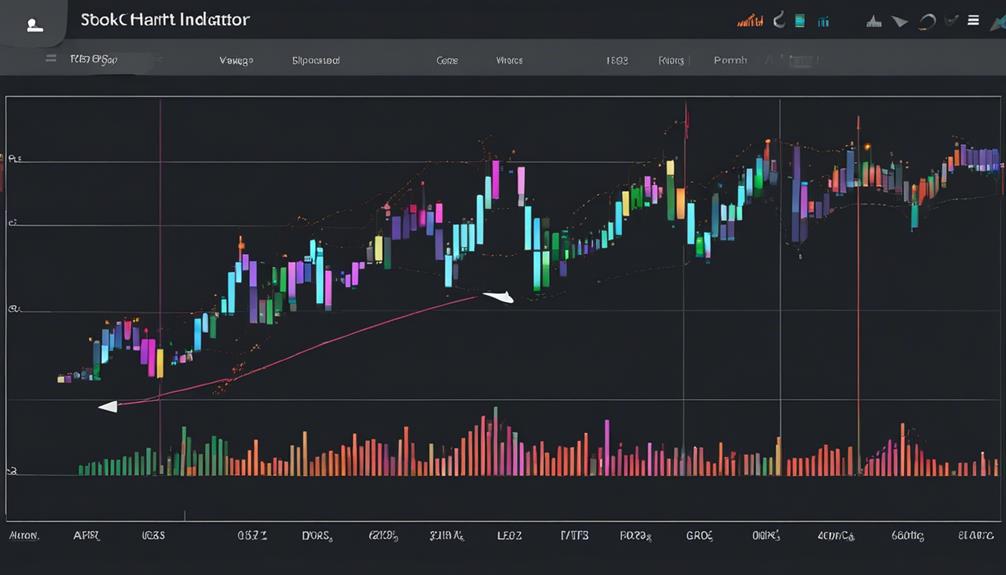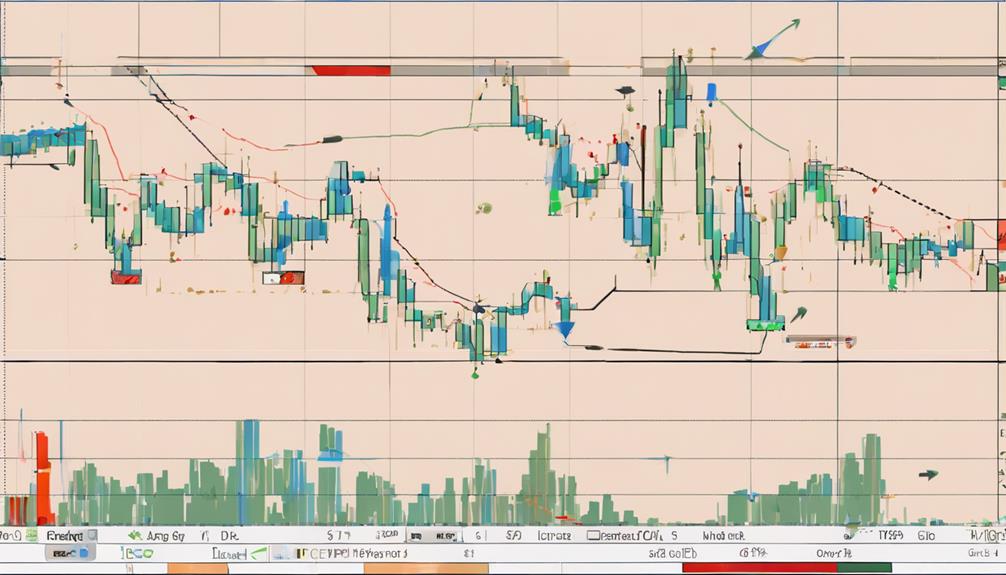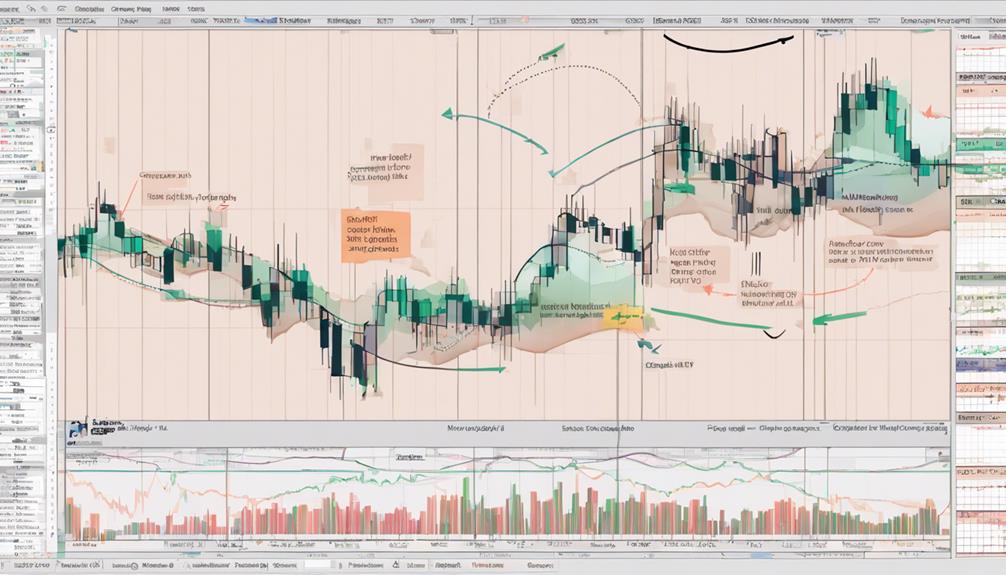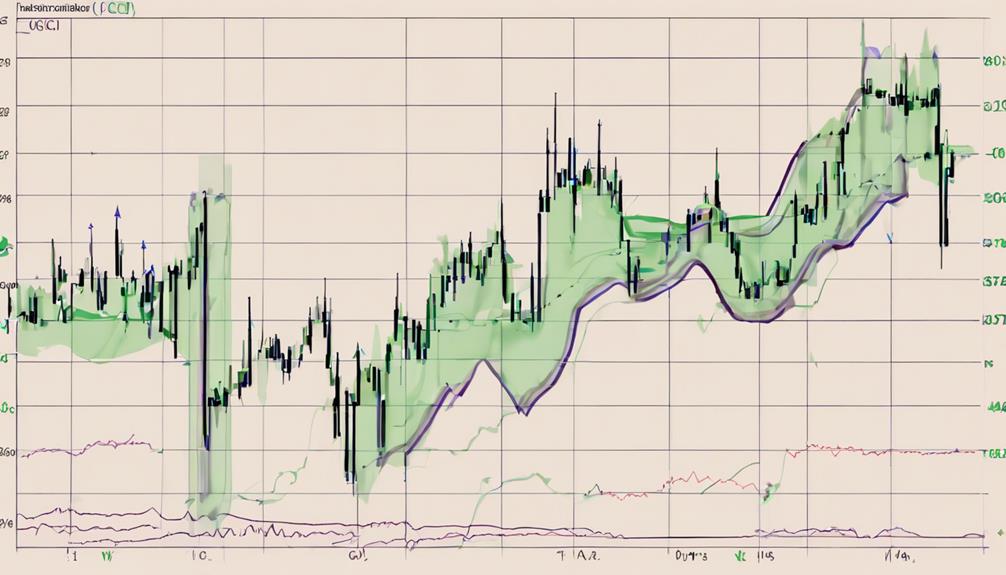As traders navigate the complexities of financial markets, the ability to decipher signals from technical indicators becomes paramount.
When it comes to interpreting Commodity Channel Index (CCI) signals, a nuanced understanding can unveil a treasure trove of insights into market dynamics. From identifying trend reversals to pinpointing potential entry and exit points, the CCI offers a multifaceted approach to market analysis.
But how can traders effectively harness the power of these signals to optimize their trading strategies and decisions? Let's explore the intricacies of interpreting CCI signals, shedding light on its practical applications and implications for traders seeking a competitive edge in the market.
Understanding Commodity Channel Index Basics
Measuring the current price level relative to an average price level over a specified period, the Commodity Channel Index (CCI) serves as a valuable tool for identifying market trends and potential reversals.
In financial markets, the CCI is a popular technical analysis tool used by traders to gauge the overbought and oversold conditions of a security. When the CCI surpasses +100, it signifies a robust uptrend, presenting a buying opportunity. Conversely, a CCI value below -100 indicates a strong downtrend, signaling a selling opportunity.
Since the CCI does not have predefined limits, its interpretation is subjective and varies among individual traders. Traders often combine the CCI with other technical indicators to validate signals and adjust thresholds based on the volatility of the asset being analyzed. Understanding the basics of the Commodity Channel Index is crucial for traders looking to make informed decisions in the market based on price action and trend analysis.
Interpreting CCI Signals for Trends

Interpreting signals from the Commodity Channel Index (CCI) is essential for identifying trends in the market with precision and accuracy. A CCI value above +100 indicates a strong uptrend, presenting potential buying opportunities for traders looking to enter the market.
Conversely, a CCI reading below -100 suggests a strong downtrend, indicating potential selling opportunities for those seeking to capitalize on downward movements. Traders also watch for zero line crossovers on the CCI, as they can signal the beginning of new trend formations.
Additionally, trendlines drawn on the CCI chart can help anticipate trendline breaks on price charts, providing further insight into potential shifts in market direction. By combining CCI signals with price action patterns, traders can enhance their understanding of trends and improve their decision-making process when entering or exiting positions based on trend analysis.
Understanding these aspects of interpreting CCI signals for trends is crucial for traders seeking to navigate the markets effectively and profitably.
Identifying Overbought and Oversold Conditions

Building on the understanding of CCI signals for trends, identifying overbought and oversold conditions plays a vital role in guiding traders towards potential reversal opportunities in the market.
Overbought situations are typically denoted by CCI readings surpassing +100, while readings below -100 signal oversold conditions. Extreme levels, such as those exceeding +200 or dropping below -200, indicate significant overbought or oversold scenarios.
Traders seek price-CCI divergence to validate these conditions for potential reversals. However, in choppy markets, CCI signals for overbought and oversold levels may lack reliability, necessitating confirmation from other indicators.
Using CCI for Divergence Analysis

In analyzing market trends and potential reversals, utilizing the Commodity Channel Index (CCI) for divergence analysis is a key strategy for traders seeking to enhance their decision-making process.
- Bullish Divergence: Occurs with lower lows in price and higher lows in CCI, signaling potential price reversal.
- Confirmation: CCI turning upwards above the zero line confirms bullish divergence for a stronger buy signal.
- Bearish Divergence: Identified by higher highs in price and lower highs in CCI, indicating a possible downward price movement.
- Confirming Bearish Divergence: CCI turning downwards below the zero line confirms bearish divergence and presents a selling opportunity.
- Enhanced Decision-making: Divergence signals in CCI are more potent when combined with other technical indicators, providing traders with better insights for decision-making.
Advantages and Disadvantages of CCI

Utilizing the Commodity Channel Index (CCI) involves assessing both its advantages and disadvantages to make informed trading decisions in financial markets. The CCI offers several advantages, such as accurately identifying trend strength, overbought/oversold levels, and potential reversals, aiding traders in making strategic decisions.
However, CCI also has its drawbacks. It can generate false signals in choppy markets, leading to potential trading errors. Additionally, being a lagging indicator based on historical data, CCI may not provide real-time insights, impacting its effectiveness in fast-moving markets.
Traders must be cautious when interpreting CCI overbought/oversold levels to avoid making suboptimal trading decisions. To mitigate these disadvantages, it is recommended to confirm CCI signals with other technical analysis tools to enhance accuracy and reliability. Understanding the limitations of CCI is crucial for traders to effectively incorporate it into their overall trading strategy and achieve better outcomes.
What Are the Key Signals to Look for When Interpreting Commodity Channel Index?
When interpreting Commodity Channel Index, traders should pay attention to overbought and oversold levels, divergence between price and CCI, and the zero line. These key signals provide valuable insights into commodity channel index and help traders make informed decisions.
Frequently Asked Questions
How Do You Read a Commodity Channel Index?
To read a commodity channel index, analyze values above +100 as overbought, signaling selling opportunities, while values below -100 suggest oversold conditions for potential buying opportunities. Additionally, zero line crossovers and divergences with price provide signals for market trends and reversals.
What Are the Signals for a CCI Sell?
A CCI sell signal is triggered when the Commodity Channel Index drops below +100, suggesting a potential shift from an uptrend to a downtrend. Traders may look for confirmation from other indicators or bearish divergences before acting.
What Is the Interpretation of Cci?
The interpretation of CCI involves assessing overbought or oversold conditions (+100 for selling, -100 for buying), detecting divergences for potential reversals, adjusting CCI for volatility, and confirming signals with other indicators to enhance decision-making in trading strategies.
How Do You Trade Using CCI Indicator?
To trade using the CCI indicator, traders can utilize overbought/oversold conditions, crossovers, and divergence signals for buy/sell opportunities. Combining CCI with other indicators enhances trend confirmation. Setting suitable parameters based on security volatility is critical.
Conclusion
In conclusion, the Commodity Channel Index (CCI) is a valuable tool for traders to analyze market conditions, identify trends, and make informed trading decisions. By interpreting CCI signals accurately, traders can effectively navigate the complexities of the market and improve their trading performance.
Its versatility and ability to provide insights into price movements make CCI a crucial component in technical analysis. When used in conjunction with other indicators, traders can enhance their strategies and optimize their trading outcomes.
